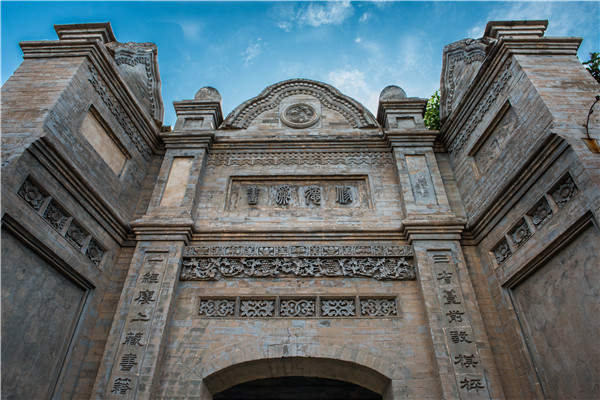 |
|
Li family coutyard. [Photo by Khalid Sharif/For China Daily]
|
Shanxi stands at the salty end of the varied Chinese culinary spectrum. Vinegar is regarded as an elixir and the noodle is king��the sliced noodle, the knife-cut noodle, the scissor-cut noodle. A Shanxi noodle virtuoso will take a 2-and-a-half-kilogram lump of dough and a handful of flour and, in a few minutes of twisting and twirling��too fast for the eye to follow��will transform it into a 12 kilometer length of diaphanous thread.
A banquet setting might include a syringe-size phial with a miniature straw protruding. What is it? "Old" vinegar. What to do with it? Drink it as a restorative aperitif.
Apples and peaches are also among the province's prides. The fat fruit are individually wrapped while still on the tree for presentation and protection, and then caringly presented at roadside stalls as if they were porcelain. Train passengers setting off from southern Yuncheng for the mid-autumn "Mooncake" festival in late September were carrying boxes of the prized Shanxi fruit or a plastic jug of old vinegar.
Most visitors to China have heard of the Terracotta Warriors of Xi'an but how many know of the equally remarkable Big Iron Oxen of Pujindu? These four magnificent solid cast iron beasts, weighing up to 75 tonnes each, once served to anchor a wooden bridge at an important Yellow River salt-exporting port during the 7th-10th century AD in the Tang era.
The river has changed course many times since then. Although discovered in the mud by locals in the 1970s, the oxen were only raised two decades later and first went on display on a raised outdoor plinth in 2005. Even more remarkable than the oxen, cast locally using the lost-wax technique, are the male figures that accompany them. Their fluid muscles, acrobatic stance and knowing expressions are reminiscent of Rodin but created more than a millennium ahead of the French master.
At Hukou, the Yellow River that divides Shanxi��"west of the mountains"��from Shaanxi��"the land west of Shan" thunders through a narrow gorge. It is a favorite spot for Chinese trippers. Although the colorfully dressed muleteers who ferry visitors down to the falls swear they see many Western tourists, there were few in evidence in late September. They remain enough of a novelty to be politely drawn aside for a souvenir photograph with children, grandmothers and wives.
As recently as this spring, Chinese archaeologists announced they had identified a previously excavated site near Linfen as the capital of the first Chinese kingdom. Three decades of research at the neolithic settlement of Taosi at the foot of Chongshan Mountain had already revealed China's earliest copper and bronze artefacts. According to Wang Wei, head of archaeology at the Chinese Academy of Social Sciences, experts have now concluded that the 2.8 million square meter site was the seat of the third millennium BC Emperor Yao, a previously mythical ruler lauded in later Confucian texts for his benevolence and diligence. "The site has the earliest kingdom relics we've found in the middle reaches of the Yellow River," Wang announced.

